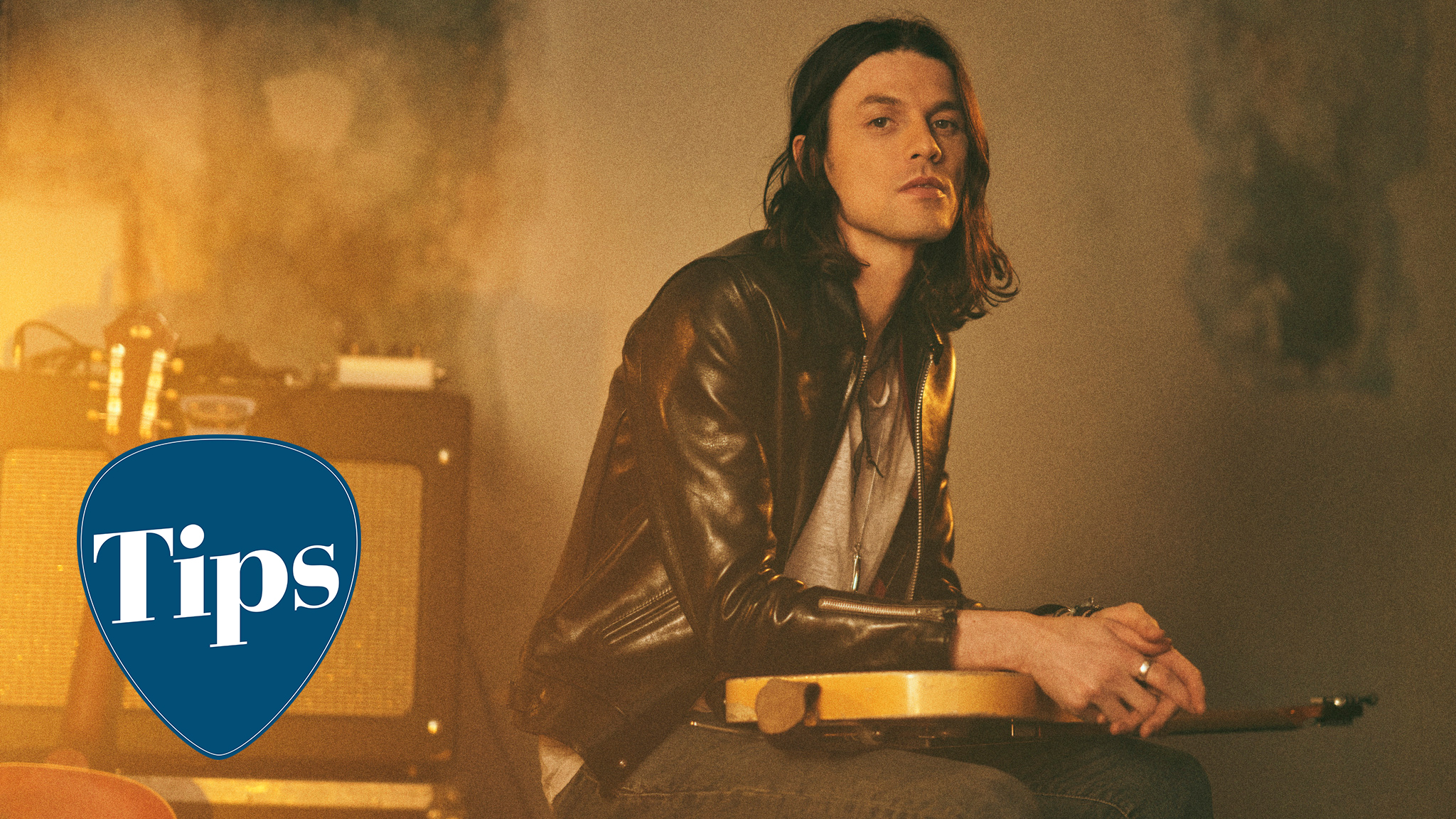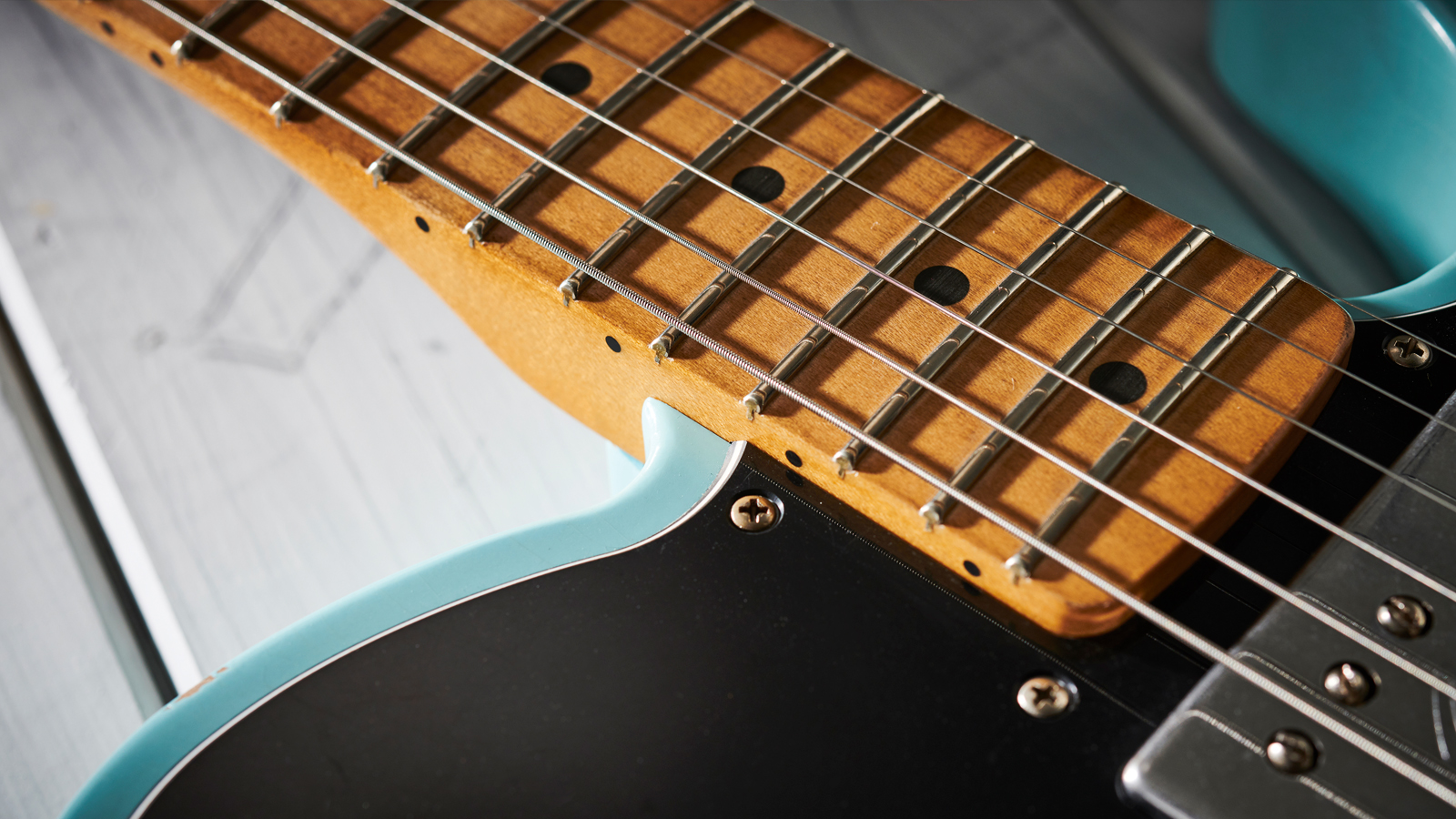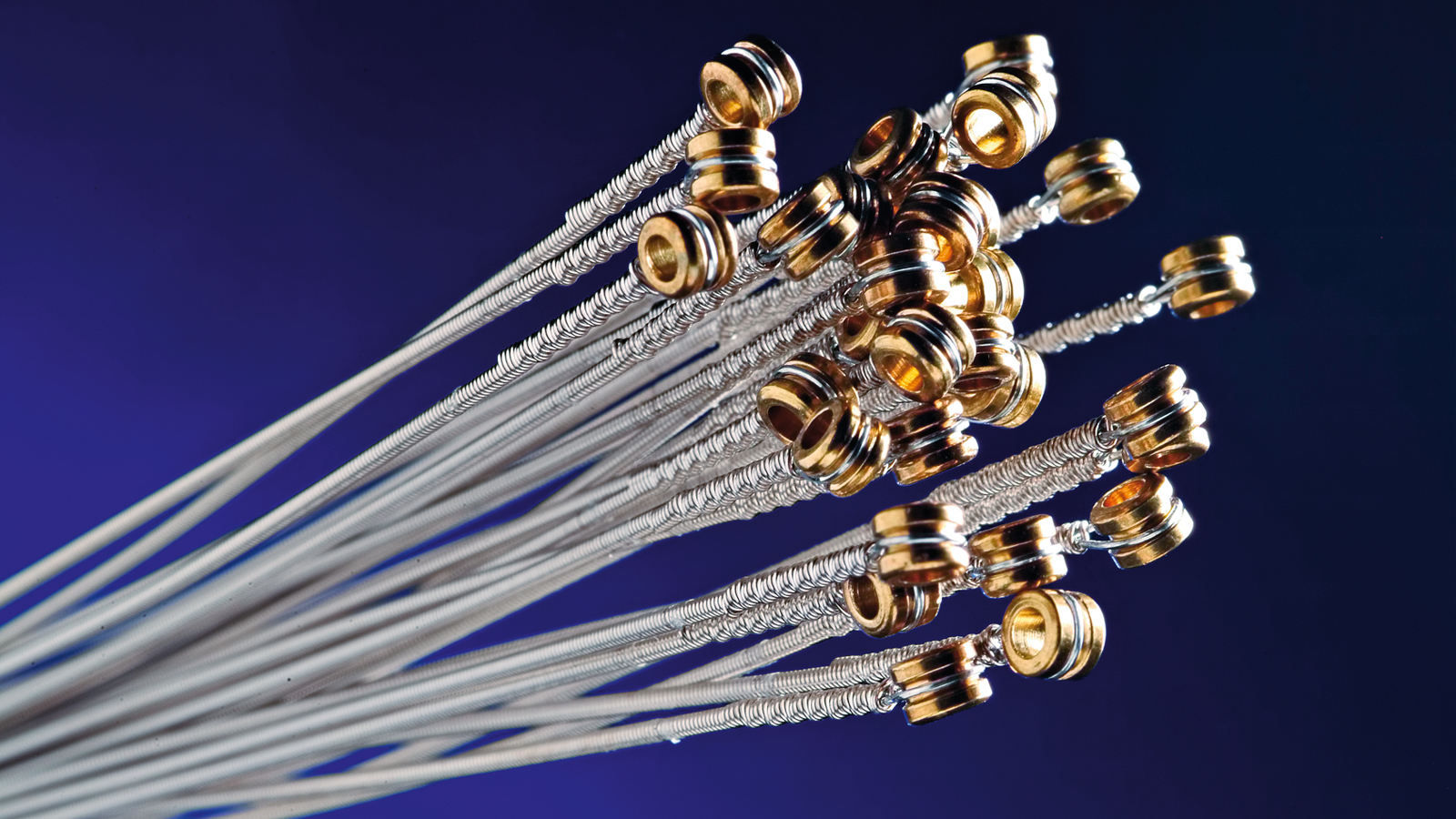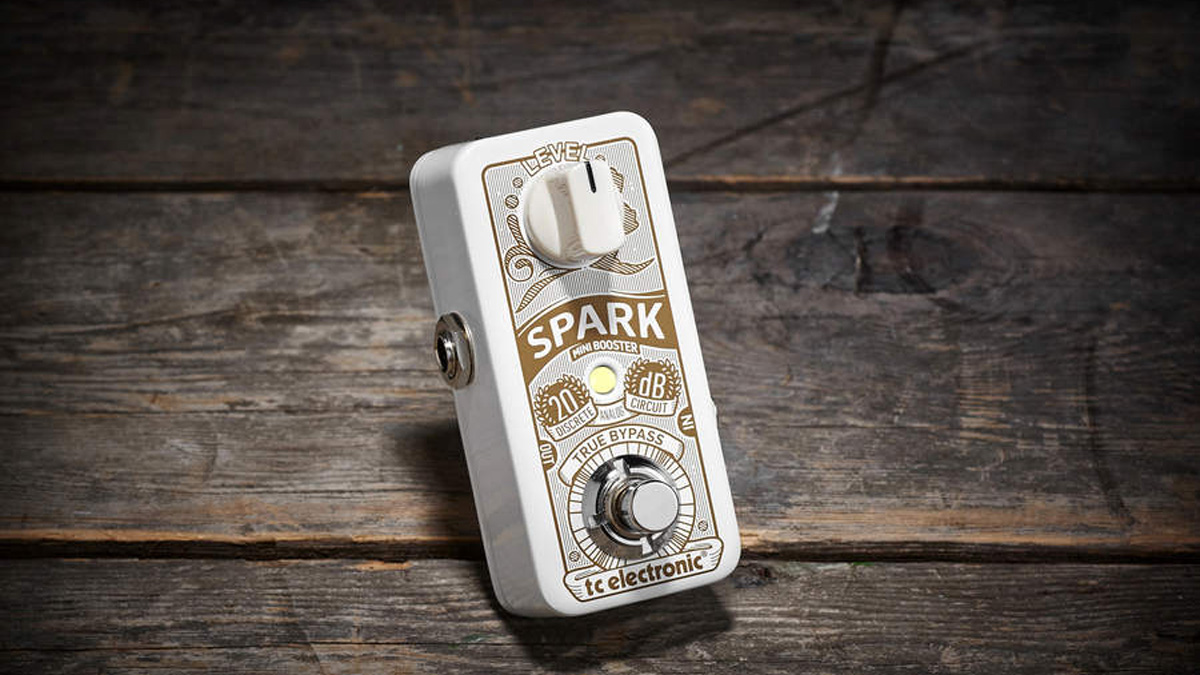James Bay talks Fender and his 10 tips for guitar players
The songwriter on sounding bigger with one guitar, string choice and why it's all about the right hand for him

When MusicRadar connects with James Bay, he’s just hours away from delivering a masterclass at Fender’s Artist Showroom in London, where five lucky fans have won an opportunity to sit down, jam and pick up tips from the chart-topping English singer-songwriter in celebration of his third album Leap, released last month. It all leads rather organically from the mini lessons posted on his socials over the last few years, he explains, through which he’s been revealing the correct fingerings and positions for some of his biggest tracks.
It was a serendipitous turn of events – instructional content wasn’t exactly at the top of his to-do list, or even necessarily on it at all, though just like every other musician on the planet he’d been forced to adapt and try new things...
“I was supposed to be releasing music and travelling, but that didn’t happen for all the obvious reasons,” shrugs Bay. “So with nowhere to go, it almost felt like my best opportunity to connect with people was through social media. I ended up doing a bunch of guitar lessons – with a lowercase ‘g’ and ‘l’ – no capitals involved [laughs]!”
Though he tells us he briefly taught guitar around the age of 18, the video tutorials felt like a new experience of sorts, allowing him to open up creatively to his audience like never before and hopefully sow some seeds of inspiration in the process.
“A bunch of my fans are proper guitar players, some of them are budding players and others might be more interested in the fact that I sing and play,” Bay continues. “So I decided to take people through what I do online and it became a weekly event. At one point it was twice a week! The lockdown just kept going on, so I did too.
"What I’m doing with Fender now is picking up that idea and sitting down, for the first time ever, in the flesh with five fans – because we can now – at the Fender showroom. The plan is to run through guitar parts of mine or even guitar parts they want me to look at, just to try and broaden their horizons and maybe even broaden mine! It’s a bit of a live guitar lesson in that sense.”
This ‘Son Of A Gunn’ Fender is now one of the favourite guitars in my collection, probably in the top two
When it comes to tools of the trade, the singer/guitarist is best known for using Epiphone guitars, most notably the 1966 Century that his limited edition signature models were based on, as well as amps made by Tone King, Victory and Marshall. He’s also used SGs, ES-330s and acoustics made by both Gibson and Epiphone, so given the partnership and location for today’s workshop, we’re keen to find out if it means we’re more likely to see Fenders in his hands moving forwards...
Want all the hottest music and gear news, reviews, deals, features and more, direct to your inbox? Sign up here.
“That’s a good question,” he grins. “There’s a particular Bob Bain ‘Son Of A Gunn’ Telecaster I’ve been playing a lot. To my knowledge there were only ever 30 made, which is a very exciting limited edition run. I found mine in Chicago back in 2018 and it was made by Paul Waller, one of the Master Builders from the Fender Custom Shop.
“I tried it out in that shop along with a bunch of other Teles because I didn’t have a good Tele in my life. There were a couple of boutique ones from smaller companies but all pretty unique in terms of spec. This ‘Son Of A Gunn’ Fender is now one of the favourite guitars in my collection, probably in the top two.
“It has a humbucker in the neck and then the slanted single in the bridge, plus a Bigsby. To give you a little bit of background, Bob Bain played guitar in the Frank Sinatra Orchestra, he also played for Quincy Jones and loads of other people. When I got the guitar he was still alive... in his 90s and still playing! So it’s modelled on his instrument and this legendary player who isn’t exactly a household name but has certainly been around and played with the absolute greatest.”
It’s a guitar that also looks the part too, thanks to an extreme relic job courtesy of the Fender Custom Shop – arguably the world’s leading authority when it comes to the art of making new guitars look as old as time. And let’s face the facts: guitars that look good are more likely to end up getting played...
“I have to say, it’s as beautiful as it is versatile,” adds Bay. “They relic’d the crap out of it and I adore it for that. There’s a beauty to a relic’d guitar because you can take it on the road and trust it won’t fall into two pieces! Some of the older guitars I own feel like they’re close to doing that, with all respect to them!”
Apparently it was the first time Fender had made a guitar and changed the model name to something different written in the same font
There are also two more Fender favourites that have kept Bay’s fingers busy in recent weeks and months – one of which being a rare one-off and world-first made exclusively for him.
“There’s a Custom Shop Strat that I really love,” he says, “and recently I just got a Fender ‘Pink Lemonade’ Mustang. It’s a guitar there’s only one of! I released a song called Pink Lemonade four years ago, I started talking to Fender about making this particular Mustang but there was a big turnaround at the company.
“That conversation fell to one side understandably, but when they got round to making it, another reason it took so long is that they’d never written a different model name on the neck before. It’s always been Jazzmaster, Jaguar, Stratocaster – the models we all know. Apparently it was the first time Fender had made a guitar and changed the model name to something different written in the same font. So it says Pink Lemonade instead of Mustang, and has two P-90s that sound incredible.”
Before heading off for his debut workshop, the singer/guitarist was kind enough to sit down and give us his 10 tips for those hoping to follow in his footsteps...
1. Don’t limit yourself to genres
“I’m always trying to marry genres and push boundaries wherever I can. One of my new songs, Chew On My Heart, has a bit of a dance feel, though from a guitar nerd perspective.
"It’s actually inspired by what George Harrison did on While My Guitar Gently Weeps! Not so much in the tones, but both songs are in D. His song is in both major and minor, as is mine. His verses are minor and choruses are major… and anyways, it’s a great song that I’ve always been a fan of.
“It’s a very famous guitar track that’s inspired a lot of songs, especially because of that tonal shift from minor to major and back. So I ended up doing exactly the same thing on Chew On My Heart. Even if it feels like a completely different kind of song – the verses are in D minor and the choruses are in D major.”
2. Experiment with thirds and tenths
“I’ve used these kinds of ideas on tracks like Hold Back The River and also song like Let It Go, which have a similar kind of thing.
"It will be different chords, a different key, so a totally different song, but with similarities in terms of that Blackbird feel – using third or tenths. Some John Mayer stuff has inspired me to do that over the years. I feel like Clapton Unplugged had some of that too, and that’s an album I’ve always loved.”
3. Look for lighter and older acoustics
There was a guy I worked with at Blackbird Studios in Nashville who owned an arsenal of instruments and amps, and he told me that guitars still think they’re a tree for the first 25 years of their life
“The first thing I usually do when trying out acoustics is play a full G chord. It’s in a nice place of the neck where there’s a lot of resonance, so it can be a good indication of whether it’s a good one. I tend to prefer lightweight acoustics, even with bigger-sized guitars like a Gibson J-200. Make sure the whole body rings and shakes when you play it.
"I like the older ones too, I guess that can be said of all guitars, but especially when it comes to acoustics. That stuck with me. I guess they need a bit of time!”
4. Make your guitar sound as big as possible
Along with my voice, I end up covering a lot of different registers and dynamics at the same time
“I come from a solo performer perspective so usually I’m trying to make me and one instrument sound like as much as I can possibly make it sound. So there’s a bass thing going on with my thumb, often on the A or E-string, then a higher melody box I need to tick on the B and high E-strings.
"And just to give it another dimension or layer, I’ll have the G-string open and ringing either in key or slightly out of key to give it this dissonant or atonal sound in between the bass and melody. It’s something in the middle that doesn’t take up much space but does create a nice filling in the sandwich.
“Along with my voice, I end up covering a lot of different registers and dynamics at the same time. The open G-string, particularly on tracks like Hold Back The River, gives me another thing to lean on to create noise and sound. I like the depth and scale I get from a part like that because there’s a bunch of different things going on. It sounds like more than one instrument underneath my voice.
“And also, just to throw this in, Hold Back The River is written and played on a guitar tuned down a whole step, so that open G is an open F-string. Tuning down seemed to add this depth, another layer of something to the part and performance, which brings me nicely to my next tip...”
5. Experiment with higher gauge guitar strings


Best electric guitar strings: sets for all styles and budgets
“Because I’m dropping my guitar down a whole step on Hold Back The River and other tracks, I’m using 13s a lot for extra tension. For songs that have that sense of delicacy, I have to fight the instrument a bit and I love that. It puts my adrenaline somewhere, so I don’t squeeze the neck too hard.
"If I had nines on there, I’d be bending those strings out while playing the riffs. The heavy tension allows my adrenaline to go somewhere and I can deliver it in a more delicate way, at least at the front of the song, in the way I want it.”
6. Use dominant chords for more flavour
The dominant seventh is like a step between two steps on a staircase and can also bring tension
“There’s an extra flavour that comes from seventh chords, at least in my personal taste and opinion. I like those seventh moments in any progression, where you play an E7 instead of a regular E. It furthers the journey through the chords in a more gradual way. E is already doing the work when you’re going between two chords, say you’re in the key of A, the E will be your turnaround chord or V chord, as it were.
“So using an E7 has this extra colour. You could use a #5 or something and get kinda jazzy, as it’s a transition chord. The dominant seventh is like a step between two steps on a staircase and can also bring tension. In terms of how I use them, I like to use mid or higher register voicings so that they can jump out, excite and really be heard for a moment. Because if I’m staying low, it can get a bit muddy.
“If I have my live band around me, there’s keys, another guitar and bass that might be referencing that seventh chord too – so I prefer to play something higher up the neck or on the thinner strings to get heard. The lower register can be a bit pointless for me, especially as I’m playing something in between rhythm and lead guitar. The guitar is an instrument that wants to show off, so let it be heard! I like to decorate on top of the rest of the band.”
7. Blend different amps to find your dream tone

There is a chance I might go back to just one amp as right now I’m on a ‘less is more’ kinda journey
“The Tone King Sky King is a big favourite of mine at the moment but I’m still on a journey when it comes to tone. On the last album, I discovered the Roland JC-120 and that’s one beautiful amp. So that’s found its way into my life, though maybe not my live show yet. I’m still mainly using the Sky King with the Victory V40 Duchess. Those two amps together for power and volume are perfect.
“There was a time where I was just using one amp and another when I had a Hamstead in there too, running three amps. It was fun… but was it 150% necessary? At the time I believed it was 99% necessary so I sort of went with it. I like an amp with a great clean sound. I tend to love my combo amps. The Hamstead was a head and a cab but generally for me it’s a cleanish combo with a good crunchy channel. If I want to go any heavier, I’ll rely on pedals.
“There is a chance I might go back to just one amp as right now I’m on a ‘less is more’ kinda journey. On the last album, it was probably ‘more is more’! The Sky King has always been my main one. I try other amps and I love them, but there’s something about that red Epiphone Century with its one P-90 going into the Sky King that I’m not willing to compromise.”
8. Use a boost pedal to give vintage guitars an extra push

“To be deeply honest with you, as much as I’m inspired by John Mayer or Jonny Buckland or Jonny Greenwood, who get really busy on pedals, I really love the players who plug straight in. It’s people like Keith Richards and Derek Trucks, who rely on simplicity and volume control through a cranked amp. I’m drawn to that. So I’m not really using many pedals these days and trying to be as minimalist as possible.
“But I have to say, the main staple pedal for me is my TC Electronic Spark booster, which brightens the signal. I use a lot of old and vintage electrics which can be slightly duller in sound compared to newer instruments. So the one pedal I always need is that Spark, because whenever I click it on, everything has an extra pop.”
9. Learn parts that mix chords with melodies
“On my new song Save Your Love, I’m actually just playing through chords rather than an individual melody or one-note line. You can pick individual lines out, but it’s an Em through a D/F# to a G then an Am up to a C. These are full chords that are coming up or going down, or even going halfway to give a gradual stepping formation to the melody.
The Wind Cries Mary, for example, had a lot of little three-note groups within the chords, but he was playing through chords
“Again, I liken that in my mind to trying to sound like more than just a voice and a guitar, even though I appreciate that’s what a lot of my music is supposed to be. I was thinking more about what a piano would sound like playing that part, with notes played together moving sort of in tandem and harmony.
“There are various songs that I picked that up from. The Wind Cries Mary, for example, had a lot of little three-note groups within the chords, but he was playing through chords. Or Little Wing, before the lead parts come in. Or if you listen to Lenny by Stevie Ray Vaughan, there are silky parts that are rich and creamy in their own way.
“And, given that we’re already talking about songs that inspired me as a teenager, Sunshine Of Your Love was another big one – there’s the riff and then there’s the harmony line he plays sometimes using thirds. John Mayer and Ben Howard are two modern players who do it a lot too.”
10. Hit those strings hard

“I keep a nice grip on a medium-heavy pick and hit all the strings, even though the acoustic guitar in that track is supposed to come across effortlessly gentle and breezy, in ways that are similar to George Harrison’s solo material – which had lots of big 12-strings and J-200s – and stuff like Fleetwood Mac. It’s supposed to come through the speakers breezy and effortless, but you’ve got to hit it.
You’ve got to strike the strings and hit every single one
“You’ve got to strike the strings and hit every single one. It’s all about the right hand for me. Sure, you need to fret things evenly and leave your open strings to ring, but the right hand drives it all. It’s nice to hit the fuck out of these guitars, even though it doesn’t really seem like that kind of music.
“I like those rhythmic players who could incorporate the backbeat a bit. I’m inspired by Bill Withers in that respect. When he was playing songs like Grandma’s Hands, Use Me or Ain’t No Sunshine, there was so much rhythm coming from the right hand. Clapton is another player who has shown how important the picking hand is for acoustics. There would be one voice, one right hand and one right left hand – each has a part to play in the big triangle of noise.”
- James Bay's new album Leap is out now. For more info and his 2022 US, European and UK tour dates visit jamesbay.com
James Bay interview: "I don’t want to copy. I want to find new ways to make people hear the guitar"
Amit has been writing for titles like Total Guitar, MusicRadar and Guitar World for over a decade and counts Richie Kotzen, Guthrie Govan and Jeff Beck among his primary influences. He's interviewed everyone from Ozzy Osbourne and Lemmy to Slash and Jimmy Page, and once even traded solos with a member of Slayer on a track released internationally. As a session guitarist, he's played alongside members of Judas Priest and Uriah Heep in London ensemble Metalworks, as well as handling lead guitars for legends like Glen Matlock (Sex Pistols, The Faces) and Stu Hamm (Steve Vai, Joe Satriani, G3).
